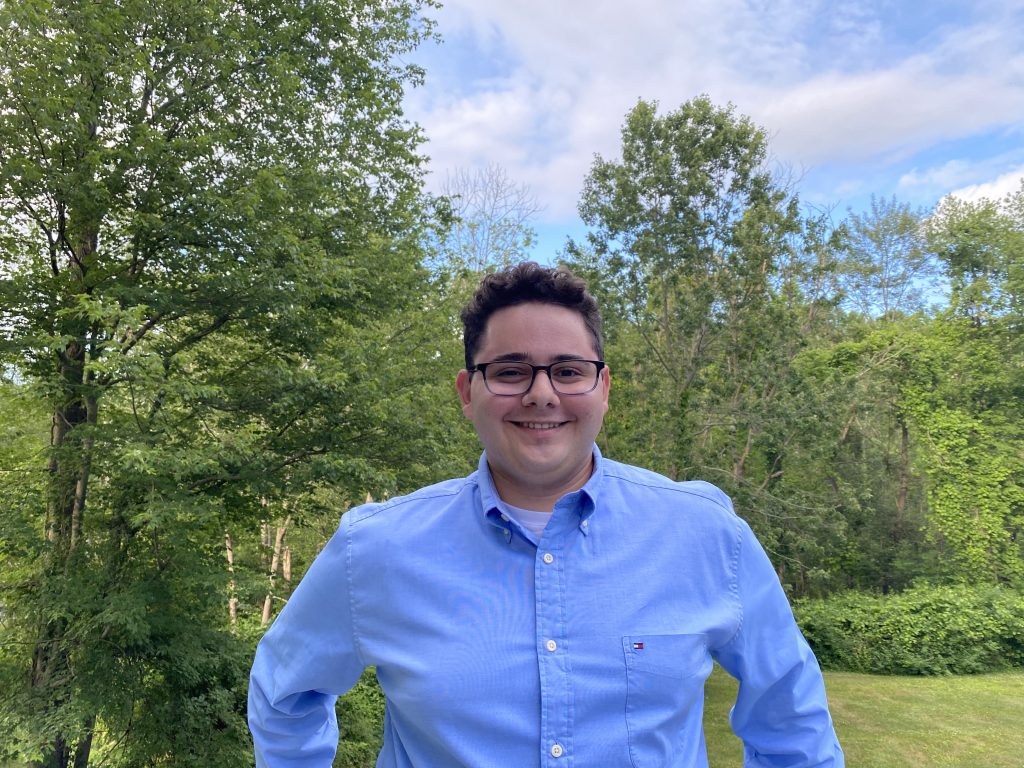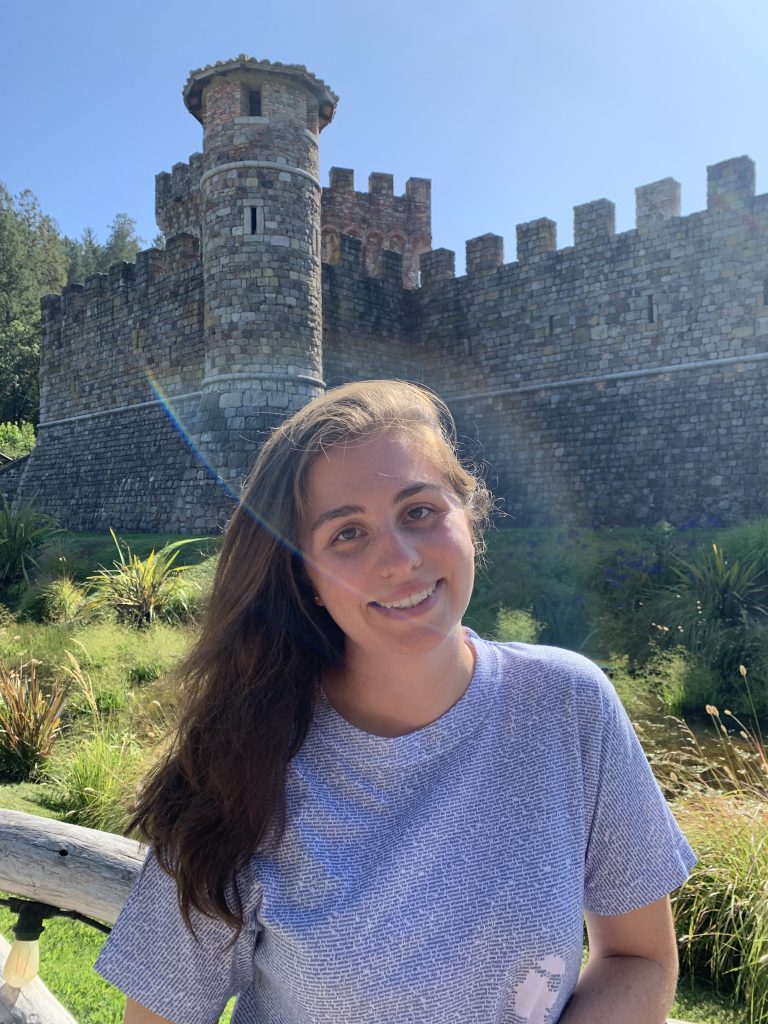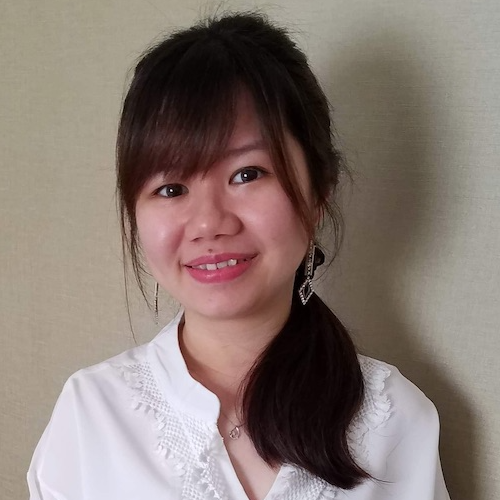A stray subject in college, a need to learn more about preservation and novel ways of information presentation, or simply finding the term buried among other things; being introduced to ‘Digital Humanities’ is at once targeted and accidental. It is common to be using DH methodology even without realizing it.
Stumbling into Digital Humanities then, is itself an interesting intellectual journey so the DHSA team got together to discuss how each of us came to it, what research interests and questions led to it, and how each of us plan to combine it with our research and professional backgrounds going ahead.
Owen Ruggiero: Class of 2022
Owen Ruggiero is a first-year student in the Digital Humanities MA program at Loyola University Chicago. Originally from Connecticut, he completed his undergraduate degree at Loyola in Anthropology and Global & International Studies. His research interests are museum anthropology, material culture, and religion/ritual.

I found Digital Humanities just after completing my undergraduate degree in May at Loyola.
As an anthropology major, I researched museum anthropology and material culture both at Chicago’s Field Museum and Loyola’s May Weber Ethnographic Study Collection.
As the pandemic unfolded earlier this year, I was drawn to Digital Humanities as I saw museums and private collections quickly pivot to virtual experiences and exhibits. More than ever, the humanities are intersecting with computing and the internet. The research being done, and the experiences being created, at that intersection are exciting and promising, and I’m thrilled to join the field at this pivotal time.
My DH research will likely continue to involve museum anthropology, collections, and material culture. I am particularly interested in public DH, which scholar and documentary filmmaker Jesse Stommel defines as: “where public work, digital work, and humanities work intersect.”
When I’m in a museum, I am just as excited by the public galleries as I am by the collection storage facilities. The galleries are not simply places to pass the time, but rather spaces where people are excited to learn and broaden their perspectives in new and challenging ways. Digital Humanities gives us the opportunity to share the work that scholars are doing with a larger and more diverse audience than ever before, bringing that incredible gallery experience to more and more people.
Stommel also notes that “making scholarly work legible to the public and helping it find an audience is a form of outreach, community building, and advocacy.” Now, amidst the pandemic and this watershed moment in the fight for racial justice, outreach, community building, and advocacy have never been so important.
You can find my undergraduate thesis, which focused on Cora festival masks in the May Weber Ethnographic Study Collection, here. I’m excited to share more research, stories, and work as I make my way through the DH program over these next two years.
Anna Kroon: Class of 2021
Anna is a second year in the DH program interested in TEI, digital editions, narrative theory, adaptation, chapbooks, and 18th century literature. She received her BA in English with a concentration in writing and minors in computer science and history from the University of New Haven.

I was introduced to Digital Humanities very early in my academic career.
I took a course called “Digital Editing” in the spring of my freshman year. I had no idea what I’d be learning just that it filled the requirement. In that course I was introduced to the basics of XML and TEI.
I was able to practice my skills on a real research project the professor was working on as well as create a small project of my own. The following year I became the research assistant for that professor and worked on her new research project about 19th century shipboard theatricals. This introduced me to new media, periods, and technologies all while I was forming my own ideas for projects.
Throughout my sophomore and junior years I decided to get minors in computer science and history so I could fill different gaps I saw in the projects I worked on. In my final year of undergraduate work I was able to work on two independent projects. “Digital Editions of Valentine and Orson” was the first project where I created a collection of story versions for a weird old tale I stumbled across in my initial research.
The transcription and encoding in this project was the basis for the second project, “Digital Representation of Narrative Elements in Valentine and Orson”, where I explored more experimental encoding and novel narrative theory. I had originally intended to pursue graduate work in literature with digital humanities as a research method, but I knew there was a lot more to DH than just the digital editions I had been working with and I wanted to explore that. I am excited to see how DH can foster and promote new perspectives in the humanities and especially literature.
Regina Hong: Class of 2021
Regina is a second-year student in the Master of Arts degree in Digital Humanities and is a Sesquicentennial Scholar working on a series of digital humanities projects in celebration of Loyola’s sesquicentennial. Her research interests include the history of migrations, with a particular focus on the Japanese community living in Singapore prior to the Japanese Occupation, digital pedagogy, and recently, culinary history.

I was interested in a degree that would supplement the skills that I had acquired in undergraduate degree in history. I was also keen on learning more about making academic information accessible and presenting such information in new and engaging ways. These reasons eventually led me to digital humanities and I got even more interested when I realized it would allow me to engage with new threads of scholarship in history.
Since my partner was also applying to graduate school, we applied to schools in the same area. I had heard good things about Loyola from a friend who had attended her undergraduate studies there, so I was delighted to see that the school was one of the few in the country offering an MA in Digital Humanities.
I came into Digital Humanities with no background in coding or computer science and was initially apprehensive as to whether I could keep up with it. These fears were put to rest both by the manageable pace of the technical courses in the program and by our program director, Dr. Elizabeth Hopwood’s, reminder that it was actually more important to lay out the “humanities” foundation first of a digital project before going into its technical aspects. So do apply even if you have had little to no experience with coding!
So far, I have had the opportunity to work on a timeline project (which made use of Omeka S and TimelineJS) as well as be involved in another project with my alma mater on designing a digital visual repository of images. The skills I have picked up in digital humanities has also been useful in shaping my pedagogy. The skills acquired from my Digital Humanities design class came in handy when I had to design an online version of my on-site class after it was moved online. It has also made me consider careers in UX/UI design, something I never thought I would be interested in before.
Right now, my interests lie in digital pedagogy, digital archives and textual studies. I am excited to incorporate my academic interest in migration history into my digital humanities capstone project. The project will be a digital archive and resource inspired by the research I did while writing a co-authored book, Postcard Impressions of Early 20th-Century Singapore: Perspectives from the Japanese Community.
Prakruti Maniar: Class of 2021
Prakruti Maniar is editor and partner of Purple Pencil Project, and hustles as a writer, researcher and more. She is deeply invested in cultural heritage, especially stories, and is committed to saving the literary heritage of India. She is currently pursuing her MA in Digital Humanities from Loyola University Chicago.

In July 2018, I had been working for about a year as a multimedia correspondent at Hindustan Times, and really looking to find a way to go abroad for a year or two, without having to be under debt, for a relevant degree that could further my career and my research interests.
Too much to ask? Probably. But the universe obliged, when I was working on a story about full-tuition scholarships for students in higher education and happened to find the one-year MA in Digital Cultures program at National University of Ireland, Galway.
‘Digital’ and ‘Culture’ are both fields I was incredibly curious about; I had tried to self-learn Python several times (unsuccessfully), and had just begun serious work on Purple Pencil Project. This course simply felt like it was made for me. I quit my job, and over the next two months, obsessively researched about Digital Humanities, and thanks to the Graduate Fellowship at CTSDH, found myself in Chicago in August 2019.
Over the last year and a half of being involved with DH conversations and readings, I have developed a keen interest in social media and information flow in our society, preservation of lesser-heard stories in the digital form, and how Digital Tools and the critical insight of Humanities can come together to create and distribute information in a more responsible way going forward, and in knowledge management at large.
I am particularly fascinated by UI/UX principles we were introduced to in our DH Design class in the Spring of 2020, and by tools such as hypothes.is, Roam Research, Zotero, Leaflet.Js and Timeline JS (which I worked with as a Research Assistant for the Mapping Religious Diversity in Modern Sichuan project).